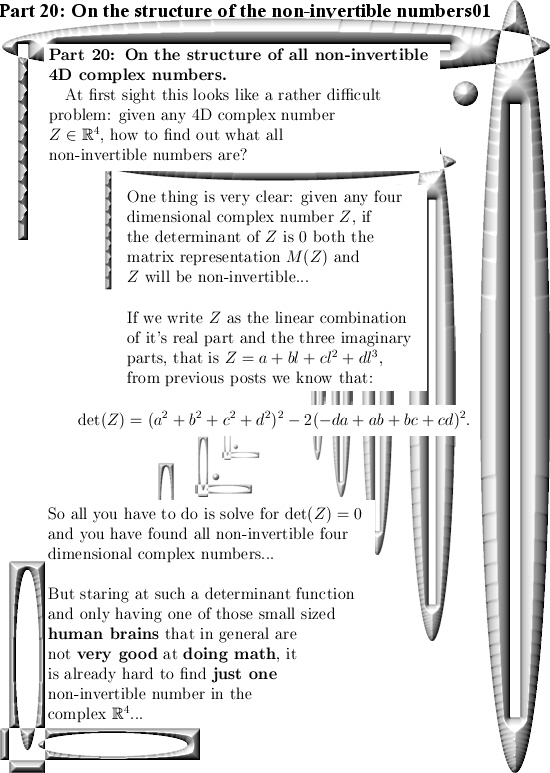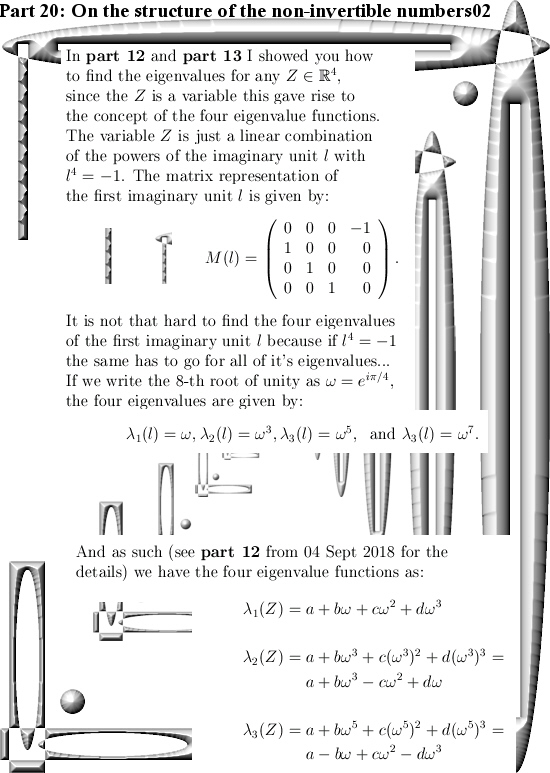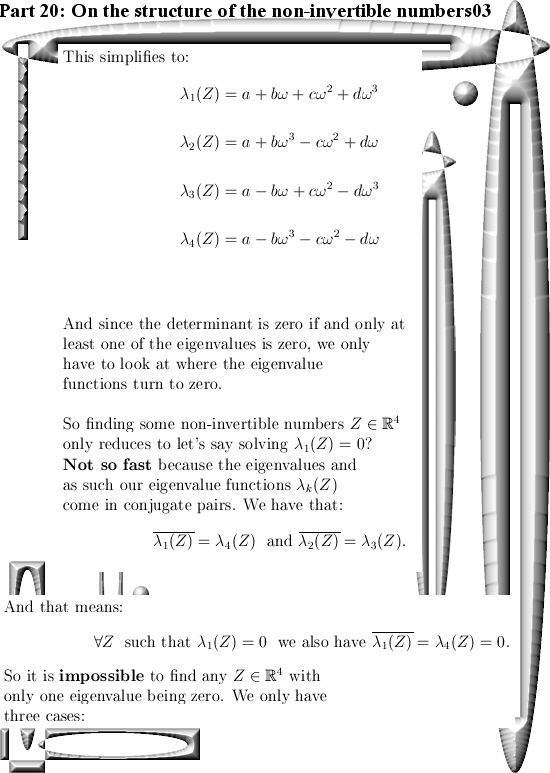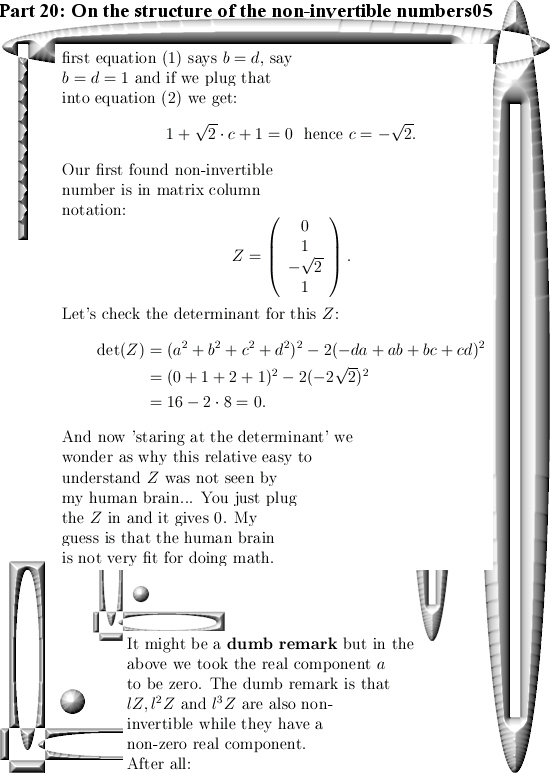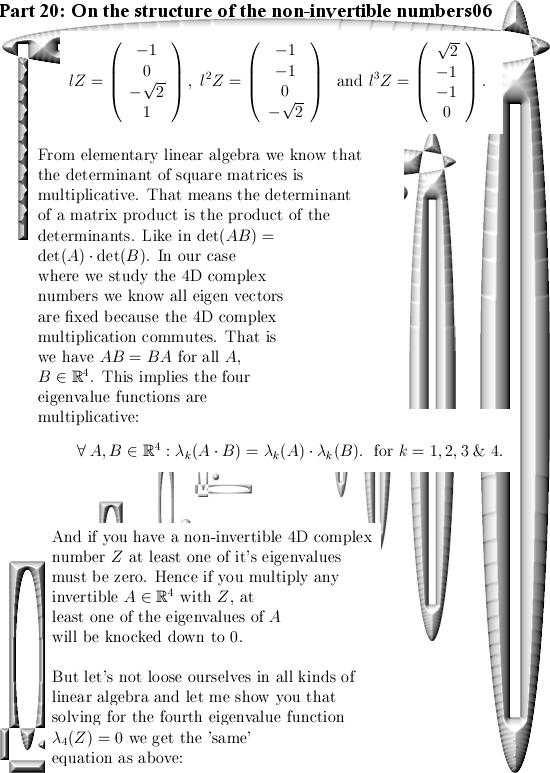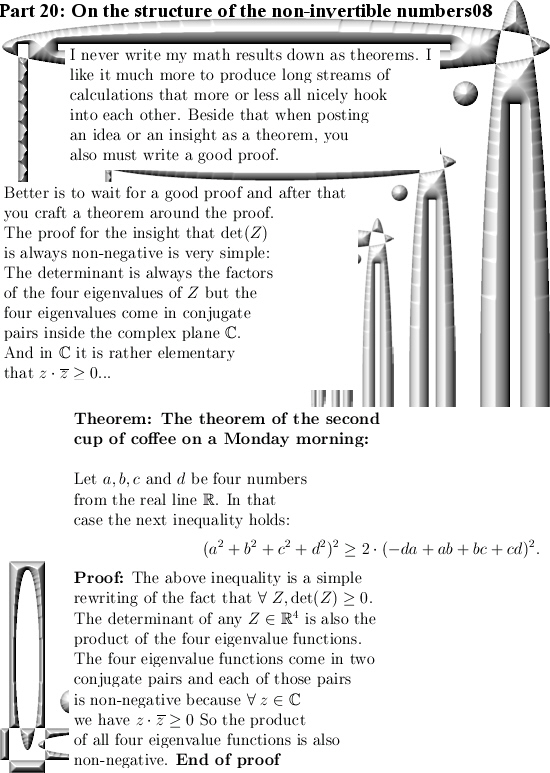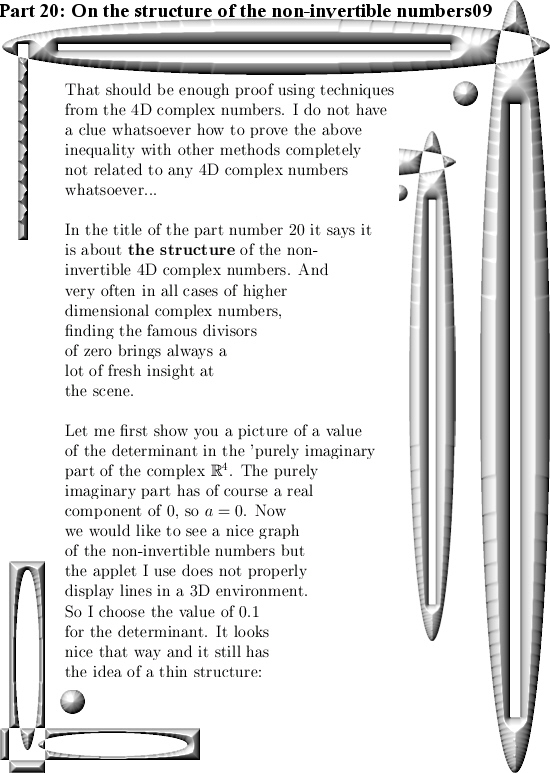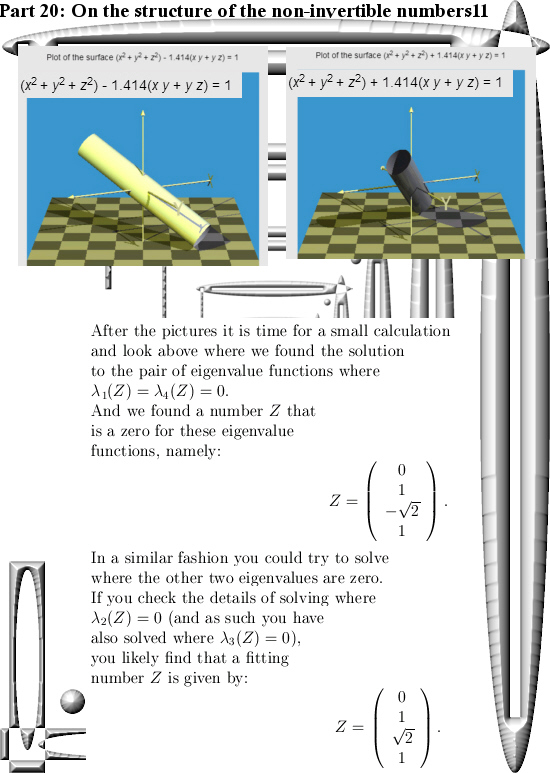Originally I planned on showing you some numerical results from the circular 4D numbers while explaining there is also a number alpha in 4D. For me that would be a nice holiday away from all that 4D complex number stuff from the last months…
But the numerical applet did not work, it is still dead in the water:
http://calculator.vhex.net/calculator/linear-algebra/matrix-exponential-using-the-pade-approximation
Ok ok, I could have done those numerical showings also in rigid analysis but I guessed that calculating a 4D tau for circular numbers via analysis was too much. And I settled for a much more easy to understand thing:
The logarithmic function for every 2D circular number. In the field of professional math professors the 2D circular numbers are known as the split complex numbers.
So that is what the next post will be about: Finding log(z) for all invertible split complex numbers.
I only wrote one previous post on the 2D circular aka split complex numbers and that dates back to Nov 24 of the year 2016:
The second hybrid: a 4D mix of the complex and the circular plane.
Ha ha, now I can laugh about it but back in the time it was some hefty pain. Anyway to make a long story short: In that old post from 2016 I calculated the log for just one split complex number namely the first imaginary unit j.
Let me show you my favorite part of that old post from 2016:
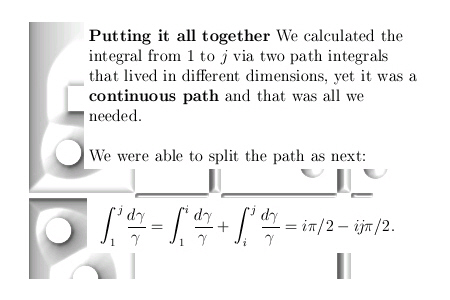
So the next update will only contain 2×2 size matrices while I skip the detail that the log lives mainly in the hybrid number system from the old post.
Till updates.
